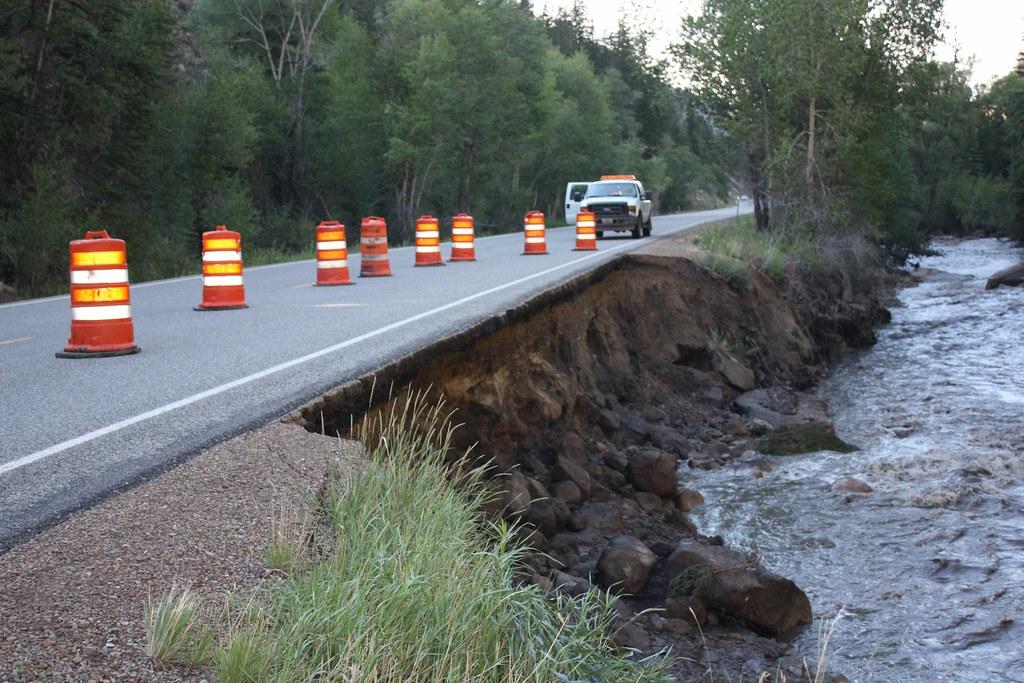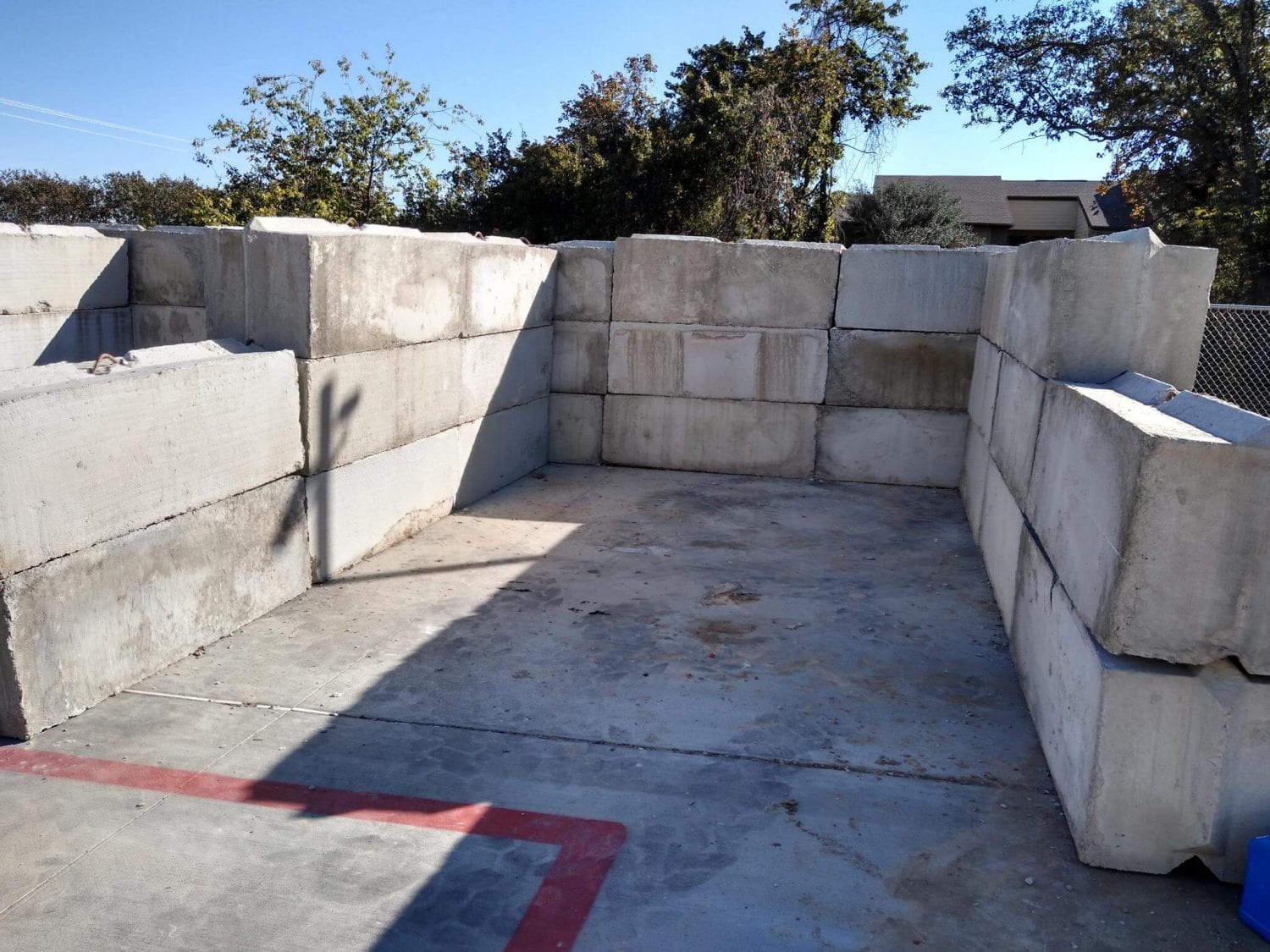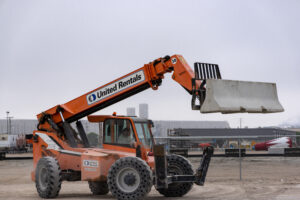Concrete barriers are the go-to solution for safety and security, especially in high-traffic areas or construction zones. Their hefty weight and slow-weathering nature make them durable and reliable in many industrial, commercial, and construction applications. However, their usefulness extends beyond the roadside, too. Concrete barriers also play a crucial role in erosion control. Retaining walls made with barriers are a great multipurpose tool for environmental management.
Erosion: The Threat Beneath Your Feet
Anywhere that soil, sand, or rock is exposed to the elements, it is at risk of erosion. Erosion is a natural process by which wind, rain, snow, and ice gradually sweep away particles of earth, degrading landscapes. Although erosion is a natural process that occurs over time, certain interventions, like floods, rivers, or even human influences like traffic and deforestation, can drastically accelerate the process.
A little soil or sand sweeping away with a rain shower might not seem like a big deal. But unchecked erosion can wipe out whole roads, crumble cliffs, cause landslides and sinkholes, or even topple buildings. The problem is especially prevalent on slopes, hills, and cliffs. Here, material loss can weaken the structural integrity of the slope, exacerbating the threat of collapse.
Erosion control methods such as retaining walls and bank stabilization are crucial for fortifying the safety and long-term survival of our built and natural environments.
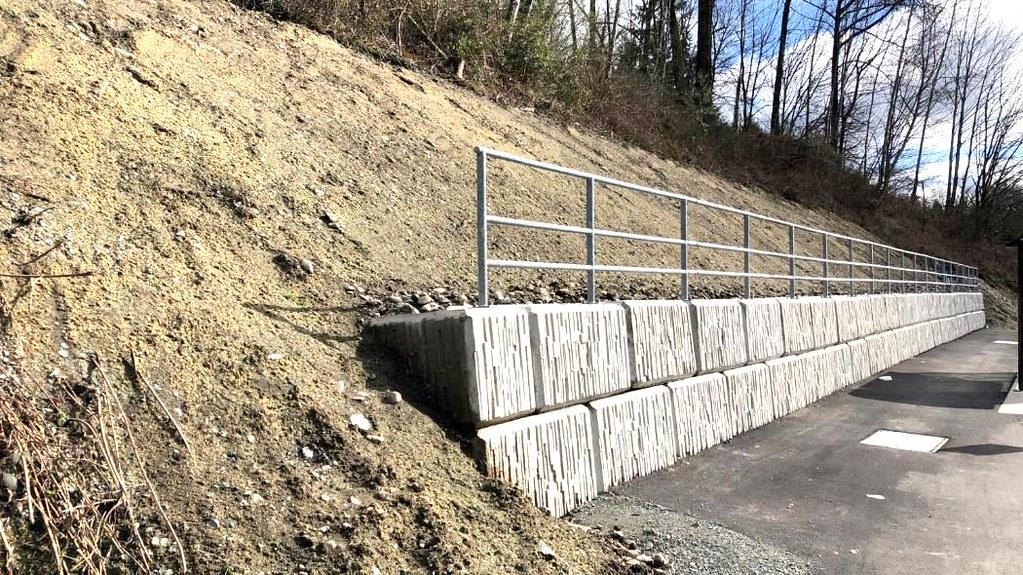
Retaining Walls for Erosion Mitigation
One of the most effective erosion management solutions is a retaining wall. Not only do these walls reinforce the face of a hill or sloping land, but they also break up the speed of water as it flows downhill. At a slower speed, water is less powerful and therefore sweeps away less sediment as it moves. A properly constructed retaining wall can not only reinforce slopes and hold soil in place, but they can also redirect water, keeping foundations and other vulnerable structures safe from unmanaged flow.
Commonly made of reinforced concrete, retaining walls need to be heavy, dense, and durable to withstand the force of the soil accumulated behind it. They also need to be impermeable against floods, rain, and groundwater.
Although concrete is a perfect material for retaining walls, you can’t use just any barrier. For example, Jersey barriers, while strong and weather resistant, are not intended for retaining wall use. Their shape was specifically designed to safely deflect vehicle collisions, and they are not constructed to adequately hold back the immense continuous pressure exerted by mounds of soil and rainwater. However, other barrier styles, like bin blocks, T-walls and L-panels, are great, affordable, modular solutions for retaining wall design.
Bin Blocks in Retaining Wall Design
Concrete retainer wall blocks are modular, interlocking blocks. They go by many names, including bin blocks, gravity wall blocks, barrier blocks, and Lego blocks. However, the structure of each is mainly the same. These blocks have notches on the top and in some cases the sides, and matching indentations on the bottoms so they can be linked together. They usually have a rebar lifting ring on top for easy transport. Their high tensile strength means you can build large structures with them without sacrificing durability. Their simple construction means you can easily scale up or down without much hassle or maintenance.
Bin blocks are often used for material storage bays, push walls, fire breaks, counterweights, and roadblocks, but they make great retaining walls, too. As they interlock, they use the gravitational force generated by their own weight to form a solid wall resistant to toppling. These walls are called “gravity walls,” and they hold soil in place effectively without bowing or toppling under its accumulated weight.

Using T-Walls and L-Panels for Cantilevered Walls
The cantilever wall is one of the most common wall types. To understand how these walls work, you have to put on your physics cap first. Cantilever walls consist of an upright slab, called a “stem”, and a horizontal base or “foot.” When these walls are placed against a slope, the weight of the soil behind the wall exerts downward pressure on the base. That vertical force keeps the wall from toppling forward under the pressure of the soil.
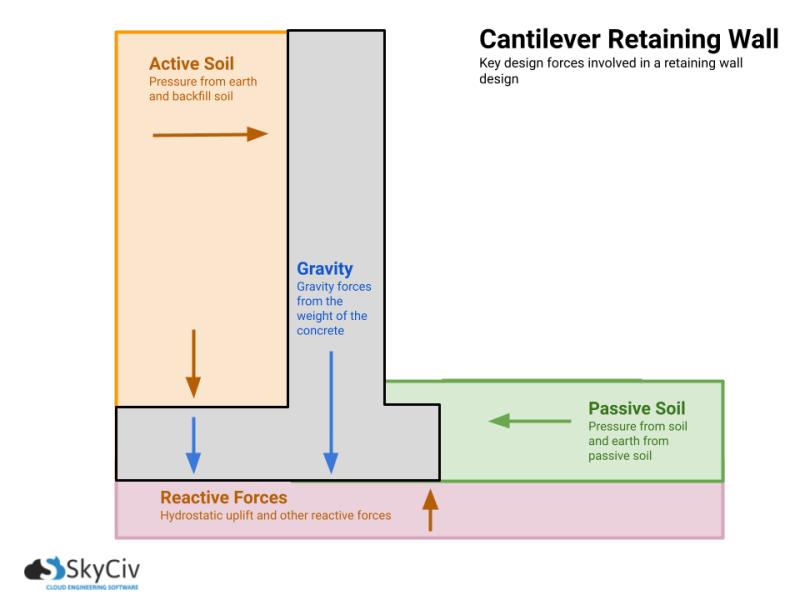
T-walls have a base that extends from both sides of the stem (forming an upside down T), whereas L-panels have a foot only on one side (making an L shape). Because the wall’s stability comes from its wide base, T-walls and L-panels don’t have to be very thick, nor do they require much space once built.
Much like gravity walls, T-walls and L-panels prevent erosion by holding soil in place and creating level surfaces at their base, which slow the speed of water and redirect runoff to drains and stormwater channels. In some instances, T-walls have even been used on top of levees to hold storm surges or floodwaters which have enormous destructive potential.
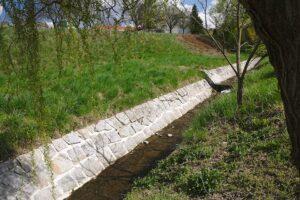
Retaining Walls as an Environmental Management Strategy
Retaining walls are just one tool for protecting people, property, and environments from landslides, sinkholes, and other erosion-driven effects. A broader environmental management strategy can not only ensure safety, but also prioritize eco-friendly practices, too.
Planting native vegetation on top of retaining walls adds an extra layer of protection. The plants form deep root systems, which hold soil in place. The concrete surfaces also help direct water into channels or drains, protecting land and buildings nearby.
—
Concrete retaining walls play a crucial role in protecting your land and property from erosion. Solutions like bin blocks and T-panel walls not only hold soil in place, but also redirect water to less damaging locations. When you’re ready to implement concrete barriers in your environmental management plan, give 48 Barriers a call.

